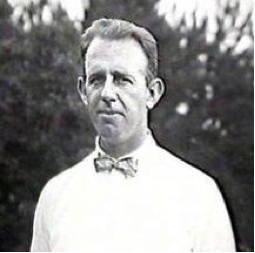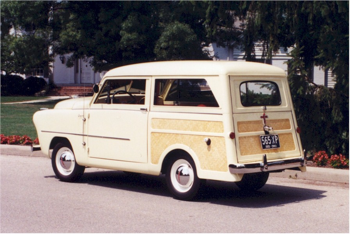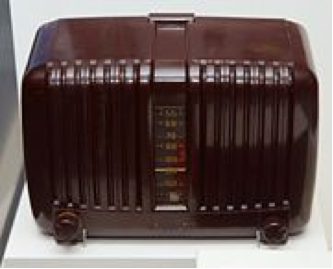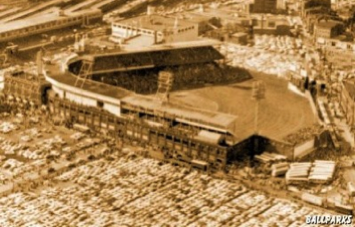Powel Crosley Jr. (1886 – 1961)

While Powel Crosley, Jr. never made more than $50 a week before he was 30, by age 33 he had amassed a large fortune as an entrepreneur selling auto parts. But there is more to his story than automobile accessories for Crosley was also an inventor, industrialist, and visionary. Born in Cincinnati, Ohio, Powel dropped out of college after two years and in 1907 formed a company to build inexpensive automobiles. His company failed and he went to work as a shop hand in the Fisher Automobile Company. He tried to be a driver in the Indianapolis 500, but could not find a sponsor.
Powel Crosley Jr in 1920
In the meantime Crosley’s inventive mind kept coming up with useful gadgets for the automobile, such as a flag holder which held 5 American flags and clamped on the car’s radiator caps. World War I generated patriotism and thousands of flag holder were sold. By 1919, Powel and his brother, Lewis, were selling millions of dollars in car parts and were diversifying into other consumer product such as phonograph cabinets. When his young son wanted a wireless radio, a new item then, Crosley was shocked by their price in excess of $100. He recognized the appeal of radio and began manufacturing $9.75 radios. By 1924, Crosley Radio Corporation was the largest radio manufacturing company in the world and later came out with the first push-button radio. He ventured into radio broadcasting to sell more radios and his Cincinnati Station, WLW, was the most powerful station in the world. Crosley developed some of the earliest “soap operas” with sponsorship by the Cincinnati soap manufacturer Procter & Gamble Co.
Beginning in 1930, Crosley had added refrigerators and other household appliances to his products. In 1932, he had the idea of putting shelves in the doors of his “Shelvador” refrigerators. All other manufacturers soon followed. As an astute industrialist, he had invested in his own businesses instead of the stock market. Therefore, he was able to keep his employees working during the Great Depression.
In 1934, Crosley purchased the Cincinnati Reds professional baseball team and renamed their stadium Crosley Field. He had electric lights installed and on May 24, 1935, the first nighttime game in baseball history was held between the Reds and the Philadelphia “Phillies.” Attendance at the night games was up 400% over daytime events. Much later, Crosley branched into television and the Cincinnati Reds baseball team became the first sports program ever broadcast on television in color.
On a personal level, Crosley owned as many as six airplanes and a number of yachts. He was a renowned fisherman and owned fishing camps in Canada and Carolinas, plus houses in Havana and the Caribbean. In 1929 he built a ten bedroom winter retreat for his wife in Sarasota, Florida, called “Seagate”. After the death of his wife, Gwendolyn, of tuberculosis in 1939, Powel Crosley all but abandoned the house. Today, his restored mansion is the Powel Crosley Museum and is located on Tamiami Trail just north of Ringling’s museum and opposite the Sarasota Airport.
In 1939, Crosley Motors, Inc. built a small car with a wheel base of 80-inches, a weight of 925 pounds, and a selling price of $350. Crosley sold 5,757 of these small cars before he converted his factories into manufacturing bomb fuses during World War II. After the war he resumed building small cars and in 1949 introduced the first disc brakes. This new “Crosley” sold for $850 and got 45 miles to the gallon. About 75,000 of these small economy cars were sold before closing down production in 1952 because gasoline was cheap in the 1950s the American public was then demanding larger automobiles.
Powel Crosley Jr. died of a heart attack on March 28, 1961 at the age of 84. In his life time he was responsible for the first…in-dash car radio (1930), soap operas (1934), night baseball (1935), the compact economy car (1939), and the first 4-wheel disc brakes (1949).

1951 Crosley Station Wagon

1956 Crosley AM Radio

Renamed Crosley Field in 1934
